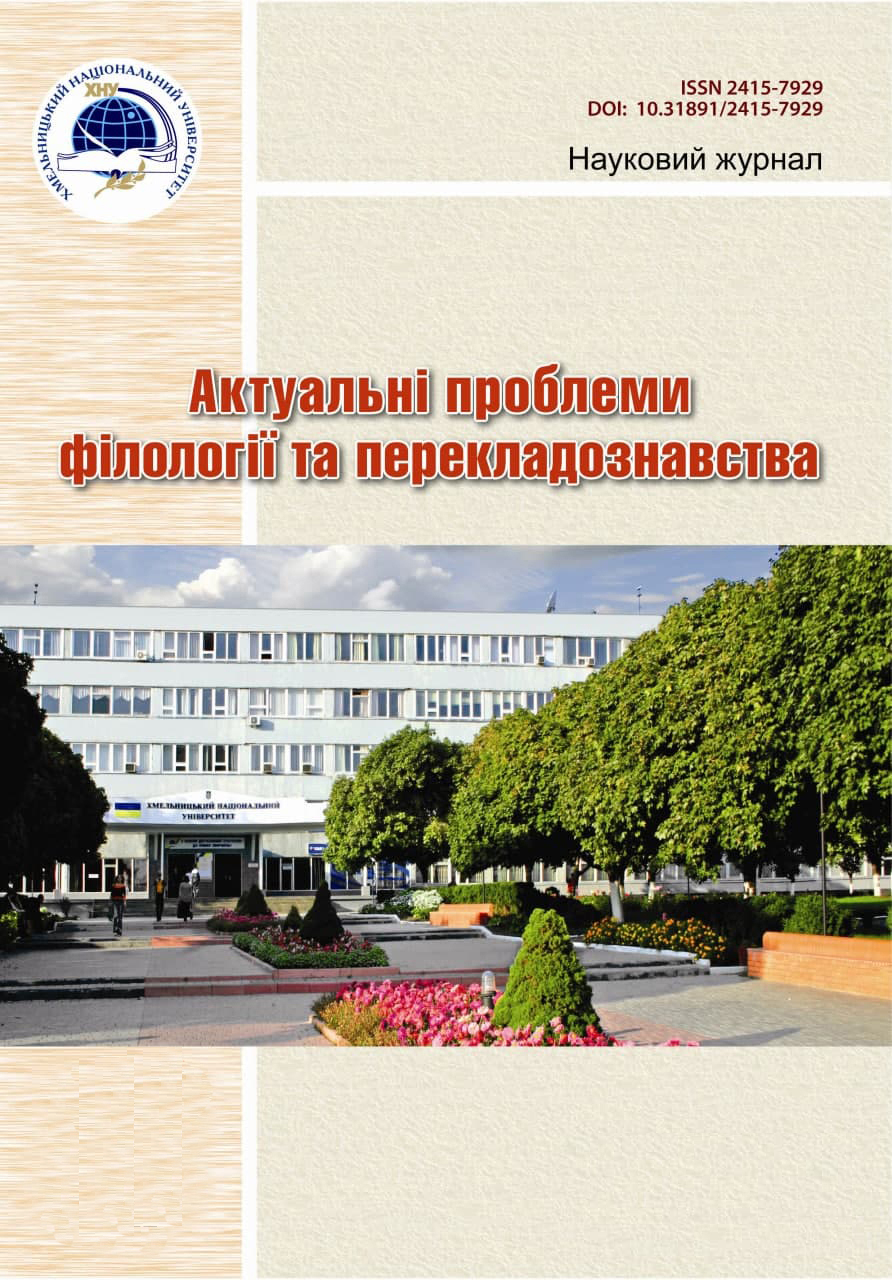СТРУКТУРНІ ОСОБЛИВОСТІ ФРАЗЕОЛОГІЧНИХ ОДИНИЦЬ З ЧАСОВИМ КОМПОНЕНТОМ В АНГЛІЙСЬКІЙ, НІМЕЦЬКІЙ ТА УКРАЇНСЬКІЙ МОВАХ (НА МАТЕРІАЛІ ЕКОНОМІЧНИХ ТЕКСТІВ)
DOI:
https://doi.org/10.31891/2415-7929-2021-21-49Ключові слова:
фразеологічні одиниці, граматично-структурна класифікація, структурно-семантична класифікація, часовий компонент, економічні текстиАнотація
У статті розкрито структурні особливості фразеологічних одиниць з часовим компонентом в англійській, німецькій та українській мовах на матеріалі економічних текстів. Здійснено компаративний аналіз за структурно-граматичною характеристикою фразеологічних сполук з часовим компонентом згідно класифікацій науковців в англійській та німецькій мові залежно від структурно-граматичних, функціонально-семантичних та інших мовних властивостей фразеологізмів і методів їх дослідження в сучасній фразеології. У процесі дослідження було проаналізовано англомовні фразеологізми з часовим компонентом hour, minute, time, second, moment та німецькомовні фразеологізми з часовим компонентом Stunde, Minute, Zeit, Sekunde, Moment зі структурою словосполучень. Виокремлено наступні розряди фразеологізмів, побудованих за моделлю словосполучень: іменникові, дієслівні, прислівникові та прикметникові. Майже всім проаналізованим фразеологічним одиницям властивий підрядний тип синтаксичного зв’язку. Залежно від числа знаменних слів представлено поділ англомовних фразеологічних одиниць з часовим компонентом у структурному відношенні на одновершинні, двовершинні й багатовершинні. Німецькомовні фразеологізми з часовим компонентом були досліджені та класифіковані згідно структурно-семантичної класифікації, за якою фразеологізми німецької мови поділені на наступні групи: парні слова, ідіоми, крилаті вирази та прислів'я.
Завантаження
Опубліковано
Номер
Розділ
Ліцензія
Авторське право (c) 2021 Н. ШЕВЕРУН, Г. ЛЕЙЦЮСЬ (Автор)

Ця робота ліцензується відповідно до ліцензії Creative Commons Attribution 4.0 International License.

